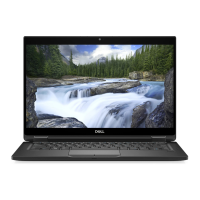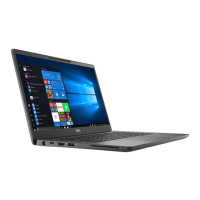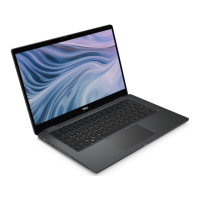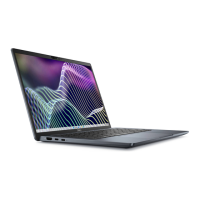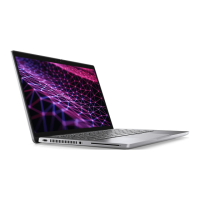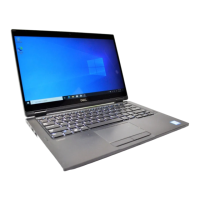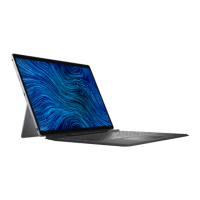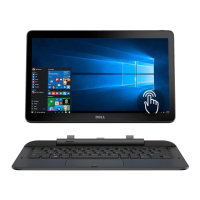Why is my Dell Latitude 7390 showing no memory/no RAM detected?
- SStacey LeeJul 28, 2025
If your Dell Laptop is not detecting memory or RAM, this could be due to memory or RAM failure.
Why is my Dell Latitude 7390 showing no memory/no RAM detected?
If your Dell Laptop is not detecting memory or RAM, this could be due to memory or RAM failure.
What causes memory failure/RAM failure in a Dell Latitude 7390?
A memory or RAM failure in your Dell Laptop could be caused by invalid memory being installed.
What causes a processor failure in a Dell Laptop?
A processor failure on a Dell Laptop could be linked to the system board, potentially involving BIOS corruption or a ROM error.
What causes RTC power failure in a Dell Latitude 7390?
An RTC power failure in your Dell Laptop might be caused by a PCI, Video card, or chip failure.
What does BIOS recovery 1 mean for a Dell Laptop?
If you encounter a BIOS recovery issue (BIOS recovery 1) on your Dell Laptop, it might be because the recovery image was found but is invalid.
What to do if my Dell Laptop battery is swollen?
If you notice that your Dell Laptop battery is swollen, immediately stop using the laptop. Disconnect the AC adapter and allow the battery to fully discharge. You should then replace the swollen battery and dispose of it properly. You may also contact Dell product support to explore options for replacing the swollen battery under your warranty or service contract.
Essential safety guidelines before performing any disassembly or repair procedures.
Steps to prepare the computer for internal access, ensuring safety and preventing damage.
Procedures for reconnecting components and safely turning on the computer post-service.
Instructions for removing and installing the computer's base cover.
Details on removing and installing 3-cell and 4-cell Lithium-ion batteries.
Procedures for removing and installing PCIe Solid State Drive (SSD) modules.
Steps for removing and installing RAM memory modules.
Comprehensive guide for removing and installing the main system board.
Explains the evolution and features of Universal Serial Bus (USB) technology.
Details the Thunderbolt interface and its integration with USB Type-C connectors.
Explains the features and advantages of the HDMI 1.4 interface.
Lists the different processor models and their technical specifications.
Details memory capacity, type, and speed specifications for the system.
Provides specifications for the 3-cell and 4-cell batteries, including capacity and dimensions.
Lists the physical dimensions and weight of the laptop.
Explains the role and function of the Basic Input/Output System (BIOS).
Step-by-step instructions on how to access the BIOS setup utility.
Information about setting and managing system and BIOS setup passwords.
Instructions for updating the system's BIOS via Windows or USB.
Guide on how to download and install necessary drivers from the Dell support website.
Explains the importance of the chipset driver for system component identification.
Information on verifying and installing USB drivers for optimal functionality.
Safety guidelines and procedures for dealing with swollen laptop batteries.
How to invoke and use the ePSA diagnostics for system hardware checks.
Steps for recovering the OS using Dell SupportAssist OS Recovery.
Procedure to remove residual power from the system for troubleshooting.
Essential safety guidelines before performing any disassembly or repair procedures.
Steps to prepare the computer for internal access, ensuring safety and preventing damage.
Procedures for reconnecting components and safely turning on the computer post-service.
Instructions for removing and installing the computer's base cover.
Details on removing and installing 3-cell and 4-cell Lithium-ion batteries.
Procedures for removing and installing PCIe Solid State Drive (SSD) modules.
Steps for removing and installing RAM memory modules.
Comprehensive guide for removing and installing the main system board.
Explains the evolution and features of Universal Serial Bus (USB) technology.
Details the Thunderbolt interface and its integration with USB Type-C connectors.
Explains the features and advantages of the HDMI 1.4 interface.
Lists the different processor models and their technical specifications.
Details memory capacity, type, and speed specifications for the system.
Provides specifications for the 3-cell and 4-cell batteries, including capacity and dimensions.
Lists the physical dimensions and weight of the laptop.
Explains the role and function of the Basic Input/Output System (BIOS).
Step-by-step instructions on how to access the BIOS setup utility.
Information about setting and managing system and BIOS setup passwords.
Instructions for updating the system's BIOS via Windows or USB.
Guide on how to download and install necessary drivers from the Dell support website.
Explains the importance of the chipset driver for system component identification.
Information on verifying and installing USB drivers for optimal functionality.
Safety guidelines and procedures for dealing with swollen laptop batteries.
How to invoke and use the ePSA diagnostics for system hardware checks.
Steps for recovering the OS using Dell SupportAssist OS Recovery.
Procedure to remove residual power from the system for troubleshooting.
| Graphics | Intel UHD Graphics 620 |
|---|---|
| Operating System | Windows 10 Pro |
| Processor | Intel Core i5-8250U / i7-8650U |
| Display | 13.3-inch FHD (1920 x 1080) |
| RAM | 16GB DDR4 |
| Storage | 256GB/512GB SSD |
| Battery | 4-cell 60Whr |
| Ports | 2 x USB 3.1, 1 x USB Type-C, HDMI, MicroSD card reader |
| Wireless | Intel Dual Band Wireless-AC 8265 Wi-Fi + Bluetooth 4.2 |
